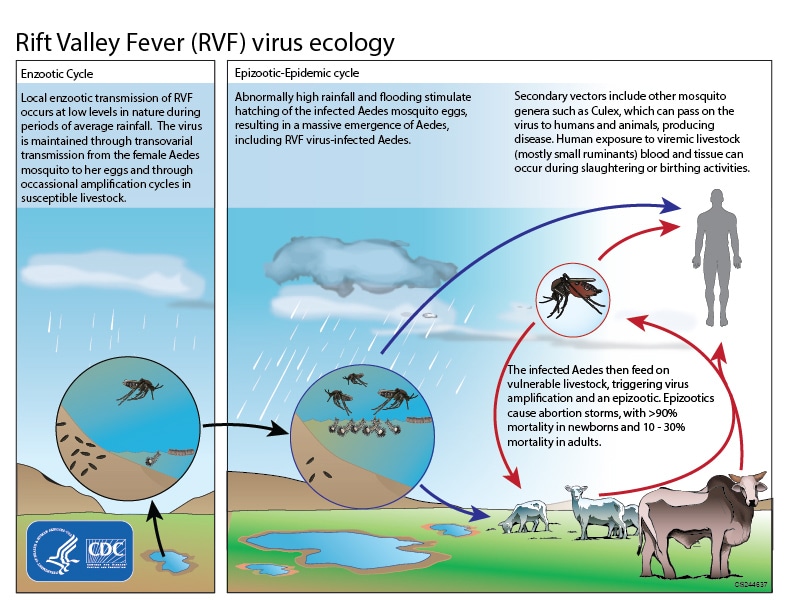Virus Ecology

This graphic shows the ecological cycle for the Rift Valley Fever virus (RVFV). Mosquitoes are both a reservoir and vector for RVFV, which means that they can maintain virus for life and transmit it to their offspring via eggs. After periods of heavy rainfall and flooding, an increased number of RVFV infected mosquitos may hatch and pass virus to people and animals. People become infected through mosquito bites and through contact with infected animal blood or tissue. Contact can occur during slaughtering of infected animals and veterinary procedures. No person-to-person transmission has been documented.